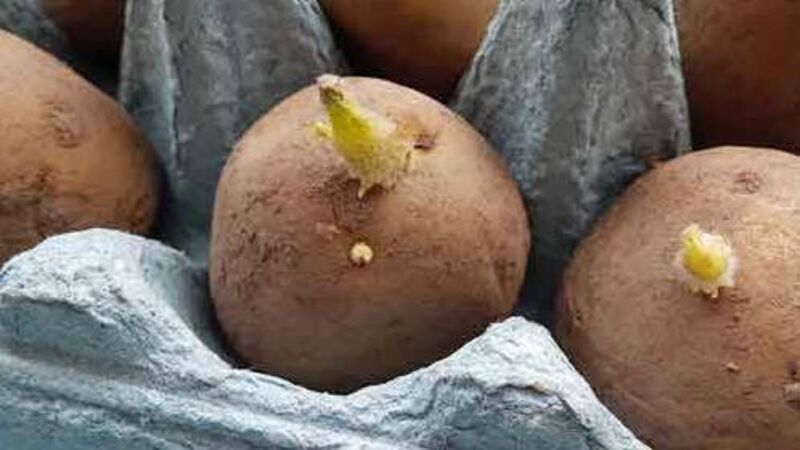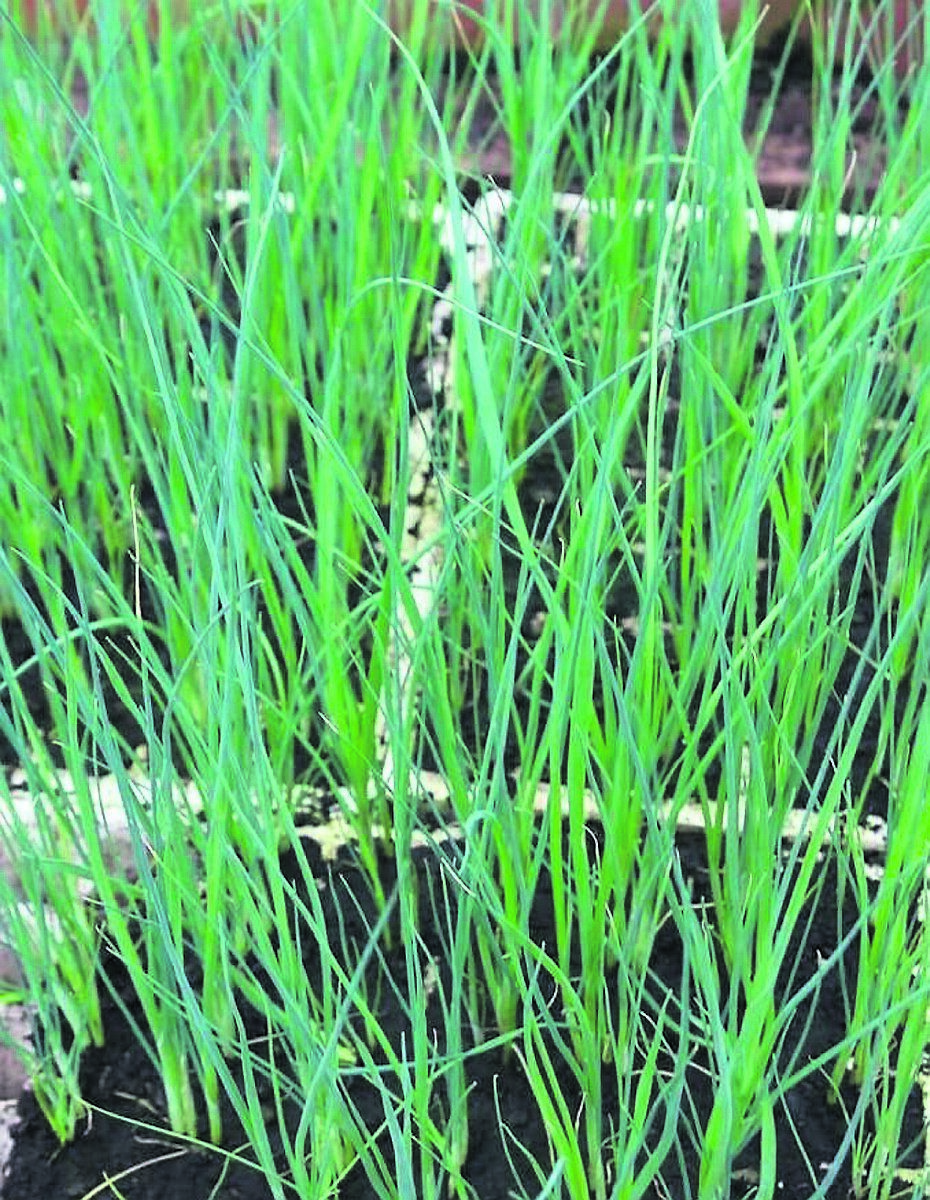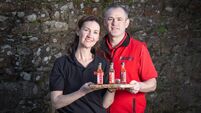In the Garden; Time to start chitting the first potatoes

You can also start chitting potatoes now.
AS we enter a new month, there are subtle signs of spring beginning to appear all around us in the garden.
January has gone and hopefully taken with it wind, rain and frost for now.
It was a challenging month weather-wise, but it is the middle of winter and can be a testing time after all of the festivities at the end of of the year!
February can still be a cold and unpredictable month, but it does begin to reveal the first signs of spring. Snowdrops begin to appear in more plentiful numbers as the month pushes on, daffodils and other spring flowering beauties like iris, crocus and scilla are all starting to appear.
Glasshouses and polytunnels get their annual hose down and clean out before the new sowings for the year ahead get underway.
It is a time of great hope and much to look forward to in the garden for the year ahead.
February 1 has taken on renewed importance in recent years with the introduction of a bank holiday to celebrate Saint Brigid’s Day, or Imbolc.
The Celtic calendar celebrated four major times of the year: Imbolc heralded the start of spring, Bealtaine the start of summer, Lughnasa the harvest festival and Samhain marked the arrival of winter.
Imbolc was always considered a time to give thanks for surviving the winter, a time of birth and new life as lambs and calves begin to appear, and a time of great hope for the growing year ahead.
It has great significance for gardening and growing as we begin to dust ourselves down after winter and contemplate plans for the growing year ahead.
The tradition of harvesting reeds to create a St Brigid’s cross (inset below) is very much alive, and when hung in a prominent place in the house, it is said to ward off evil, fire and hunger from that home.
Maybe this is the year to try growing your own cut flowers, vegetables, annual fillers for borders or home-grown tomatoes.
It is a little early for sowing seeds of most plants just yet, unless you have a glasshouse and heated bench, but it is never too early to get planning and ordering to avoid disappointment with availability.
Some Irish seed suppliers include Brown Envelope Seeds, Irish Seed Savers and Green Vegetable Seeds. Now is a great time to update seed catalogues for this year’s range of available seeds.
They can be accessed online or, if contacted, they will usually send a catalogue in the post.
Saving your own seed is a good option for some open pollinated varieties but not a good idea for F1 hybrids as there will be a lot of variation in the seed produced.
In a corner of the polytunnel, where parsley has been left to run to seed, there are lots of seedlings germinating which will provide a fresh crop of this delicious flavoursome herb later this spring and into summer, with very little effort - very satisfying!
Some of the earliest seeds to consider sowing this month are peppers, tomatoes and onions, sweet pea and celeriac.
The reasons for sowing seeds earlier are either to get growing so that an earlier crop is produced, or in some cases, like onions and celeriac, it is that the plants have a long growing season and need to be sown earlier to ensure that they get to maturity before the growing season ends.
Onions typically require about 100 days to grow from seed to harvest, but if onions sets are used this is reduced to 80 days.
Seed-grown onions are generally less prone to bolting, there are lots more varieties to choose from, and if multi-sown in modules, then the smaller bulbs can be harvested earlier and used at a smaller size, giving a longer cropping period.

Protected growing environments such as a glasshouse or polytunnel really come into their own at this time of the year, as they allow a head start, and a heated bench is invaluable for getting seeds off to an early start.
It is time to start chitting those early potato varieties for planting in the next few weeks.
Chitting involves letting the eye of the potatoes start growing in light, in a cool frost-free room. When the sprouts are about 2cm, then they are ready for planting into the soil and that can take 4-6 weeks.
Potatoes fall into a number of categories depending on how long it takes the crop to mature, First earlies generally mature in 100 days, second earlies take a little longer, 120 days, to mature, and main crop can take up to about 150 days from planting to harvesting.
Traditionally, the first potatoes were planted around St Patricks Day, but they can be planted as early as February.
Homeguard, Red Duke of York, and Orla are all good first early varieties.
Growing first earlies in a polytunnel is a great way of ensuring an early crop and having the potatoes harvested before blight becomes a problem when the temperatures and humidity are conducive to the spread of the fungal disease later in summer.
Potatoes are hungry feeders and demand a lot of the soil so plenty of manure will help to ensure a good crop.
Potatoes and tomatoes are in the same family and do not grow well together, suffering from the same afflictions like blight, and it is good to have the potatoes harvested and finished in the polytunnel before the tomatoes get going if possible. It is also better not to grow them in the same soil.
Happy Spring Gardening!







 App?
App?


